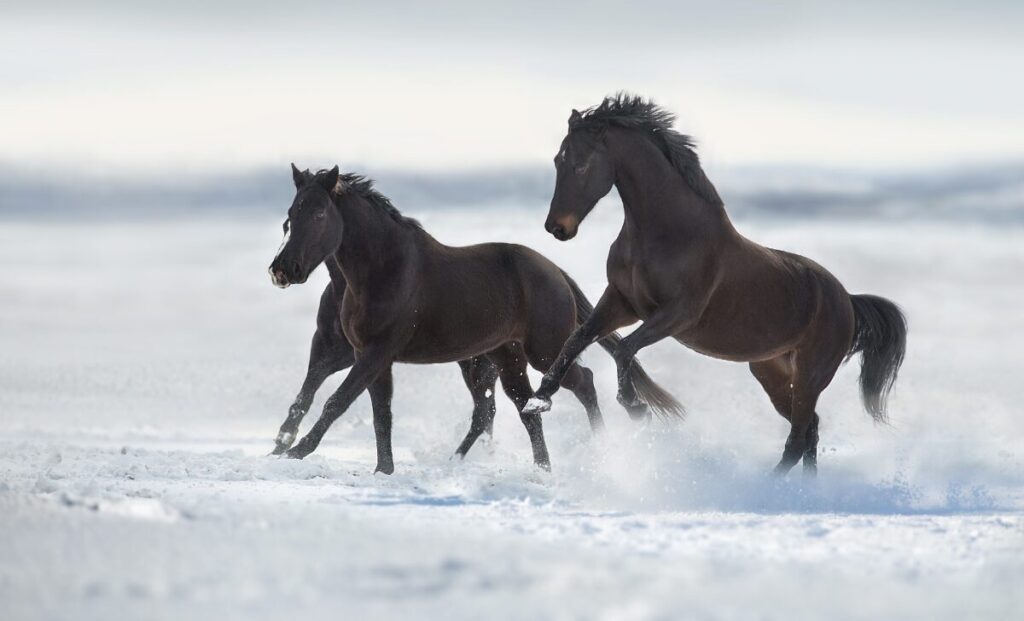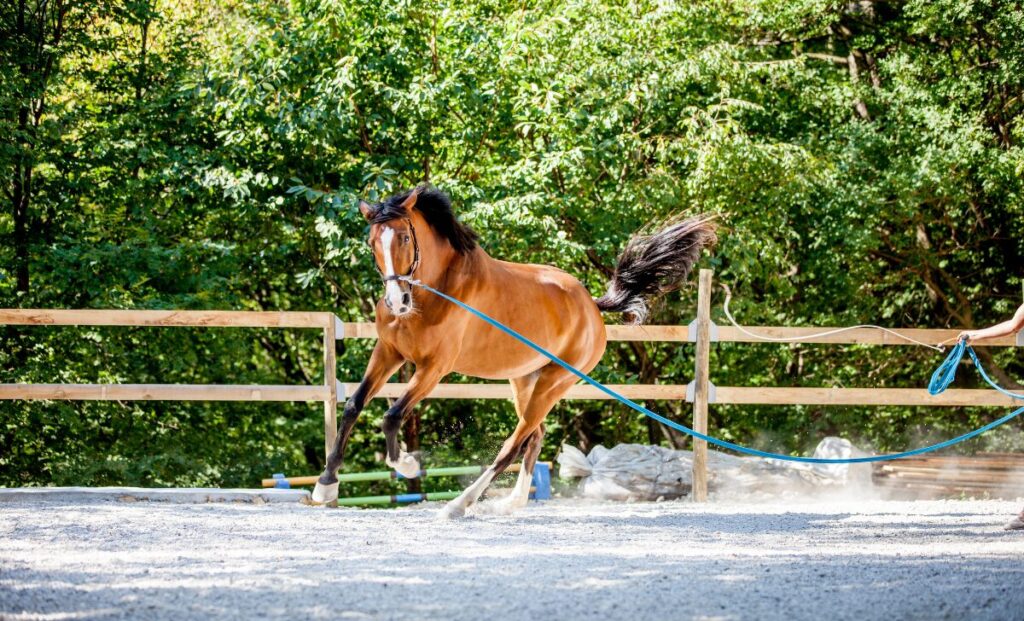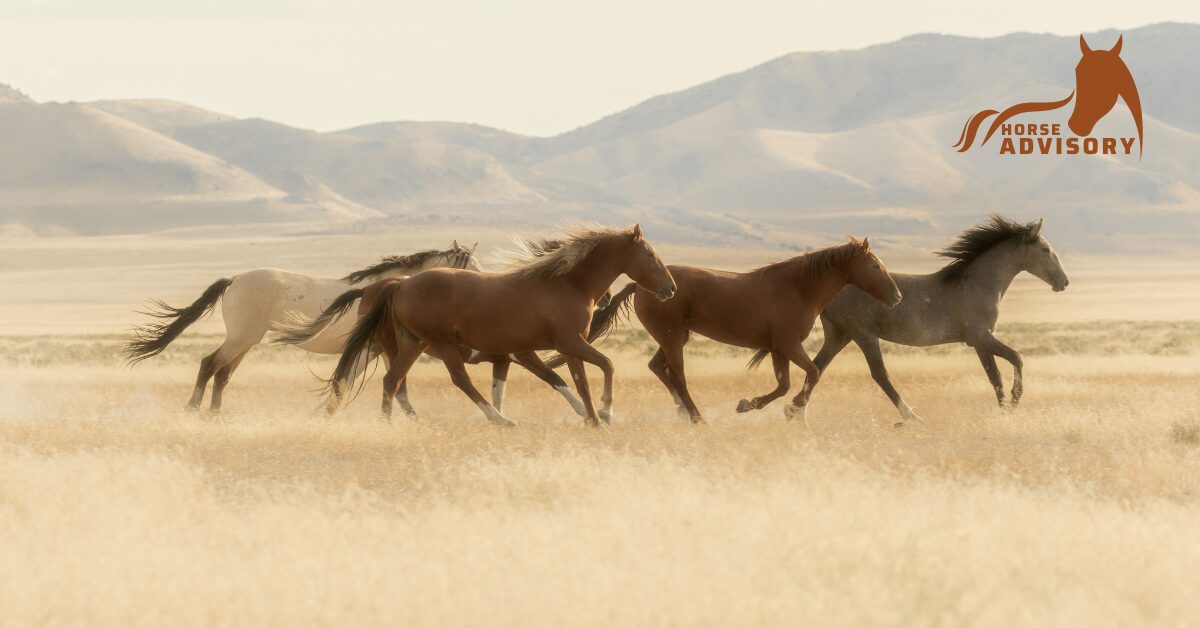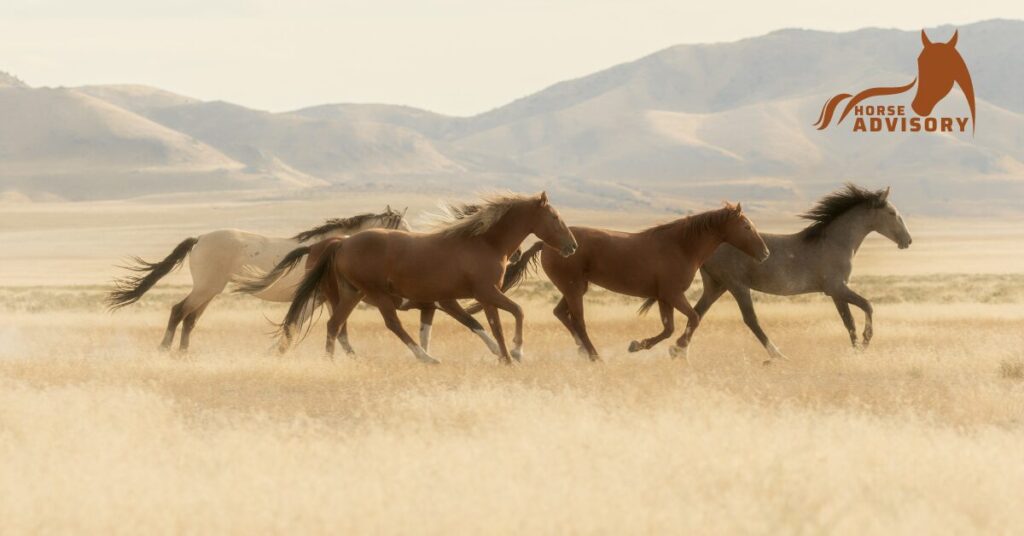Horses are incredible animals that have shared a profound connection with humans for centuries, forming a bond that rivals even that of “man’s best friend,” the dog. This enduring partnership is built on teamwork and companionship, allowing for remarkable achievements worldwide.
A key factor in the success of this alliance is the exceptional endurance and speed capabilities of horses. Their ability to maintain speed over long distances has contributed significantly to their role as invaluable partners to humans.
To gauge how far a horse can run, it’s essential to consider the various gaits available to these majestic creatures. Horses possess four distinct gaits: galloping, cantering, trotting, and walking. Galloping is the fastest gait, while trotting is the slowest, with walking falling in between. The speed at which a horse can run directly impacts the distance it can cover. Faster speeds result in shorter distances due to the heightened energy expenditure. Conversely, at a relaxed walk, interspersed with water breaks, horses can traverse far distances efficiently.
The harmony between humans and horses, underscored by their remarkable physical attributes, has paved the way for countless feats and enduring partnerships across the globe.
So How Fast Can A Horse Actually Run?
Horses, known for their impressive speed and agility, are capable of reaching remarkable velocities of up to 55 miles per hour in quick bursts. This exceptional capability highlights the innate power and athleticism of these magnificent creatures. The ability to achieve such high speeds underscores the evolutionary adaptations that have honed horses into some of the fastest land animals, showcasing their prowess in short sprints.
However, it’s important to note that sustaining this top speed over extended periods is not within a horse’s typical capacity. The energy expenditure required for such rapid movement limits the duration for which a horse can maintain this velocity. While horses exhibit astounding bursts of speed, their endurance and stamina shine brightest in longer, consistent efforts rather than in prolonged sprints at their maximum pace.
How Far Can A Horse Run?
According to information gathered from various sources, including volunteerencounter.com and horserookie.com, the distance a horse can run in a single stretch is influenced by several factors like breed, fitness level, and terrain. Horses are renowned for their endurance and strength, allowing them to cover considerable distances over extended periods. On average, a horse can travel up to 30 kilometers in a day, highlighting their impressive ability to sustain physical exertion and maintain a steady pace.
The endurance of a horse plays a crucial role in determining how far it can run without compromising its well-being. Factors such as regular breaks, hydration, and proper conditioning are essential in enabling horses to maximize their running potential. While individual horses may vary in their capabilities based on training and genetics, the innate stamina and resilience of these animals allow them to showcase remarkable feats of athleticism and endurance, making them exceptional partners in various equestrian pursuits.

How Far Can A Horse Travel In One Day?
When preparing for your next horseback adventure, it’s essential to remember a fundamental principle: the pace you set directly impacts the distance you can cover. Alongside pace, factors such as terrain, footing, and weather play significant roles in your horse’s endurance and the overall journey. Uneven terrain, rocky paths, and challenging landscapes can strain your horse’s limbs and hooves, while hot and humid weather can lead to electrolyte loss and dehydration through sweating, necessitating more breaks and potential ride interruptions if fatigue sets in.
Many riders opt for a slower, consistent pace to optimize the distance their horse can travel in a day. This deliberate approach aims to minimize the need for frequent breaks required during faster rides, ensuring the well-being of the horses. Under favorable conditions, a horse walking steadily can cover approximately 50 kilometers in a day with around 8 hours of uninterrupted walking, showcasing the impressive endurance and capabilities of these magnificent animals over extended journeys.
How Far Can A Horse Go Without Stopping?
Whether you find yourself willingly galloping at full speed or experiencing an unplanned burst of energy (commonly known as the “after-spook” gallops), it’s interesting to note that, on average, there exists a 3-kilometer threshold before your horse’s endurance starts to wane, prompting a gradual deceleration. This buffer zone serves as a gauge for riders, indicating the point at which a horse’s stamina begins to diminish, leading to a natural slowdown in pace.
In optimal conditions, a horse in top-notch shape can maintain a trot or canter for up to seven hours before reaching the limits of its endurance. However, it’s crucial to emphasize that pushing a horse to such extremes regularly is neither advisable nor sustainable. While horses exhibit remarkable endurance and resilience, respecting their physical limits and ensuring their well-being should always take precedence over pushing for extended durations at faster gaits. By understanding and acknowledging these boundaries, riders can foster a harmonious partnership with their equine companions, ensuring mutual respect and care throughout their equestrian adventures.
How Fast Can A Horse Go At Top Speed?
Horses, known for their incredible strength and speed, exhibit varying velocities influenced by factors such as breed and fitness levels. The recorded fastest gallop in history reached an astounding 88.5 kilometers per hour, showcasing the remarkable capabilities of these majestic animals. On average, racehorses maintain speeds ranging from 60 to 74 kilometers per hour, highlighting their prowess on the track.
Among horse breeds, American quarter horses are renowned for their exceptional speed, leading the pack in top velocities. Following closely are Andalusians and Orlov Trotters, securing spots in the ranks of swift steeds. While thoroughbreds are often associated with speed and agility, they fall within the top ten fastest breeds rather than claiming the ultimate title. Notably, a two-year-old Thoroughbred named Winning Brew set the record for the fastest 400-meter sprint at 70.76 kilometers per hour during an event at the Penn National Race Course in 2008, solidifying its place in equine racing history.

How Fast And How Far Can A Horse Travel With A Rider On Its Back?
In the previous section, it was noted that racehorses can achieve speeds averaging between 60 to 74 km/h. However, when carrying a rider, this speed significantly decreases to an average of 32 to 48.5 km/h. Despite this, a horse with a rider can still cover approximately 3 km at its maximum speed.
During a race, horses are paced, allowing them to cover a further distance of around 8 km at a fast pace. In the annual “Man vs Horse” marathon, where horses and humans compete in a 35.4 km (22 mile) race to determine the fastest participant, the record time of one hour and twenty minutes was achieved by William Jones riding Solitaire.
How Does The Terrain Affect How Far And How Fast A Horse Can Be Ridden?
The nature of the terrain significantly influences the distance and pace of an outdoor ride. Smooth, flat surfaces allow for easier navigation compared to rough, obstacle-laden trails.
In a controlled environment like a track, poor maintenance can strain a horse’s limbs. Wet patches and uneven ground may cause the hooves to sink slightly, resulting in extra effort in each stride and reducing the horse’s top speed.
Similarly, challenging terrain on trail rides, such as rocky or muddy paths, forces horses to slow down to avoid injury to their hooves and joints. Negotiating these obstacles consumes additional energy, impacting the horse’s performance on smoother surfaces afterward.
Final Thoughts
Considering all factors mentioned, it is crucial to recognize the individuality of each horse, even within the same breed. Elements such as the horse’s fitness, training, ride pace, terrain, and equipment used significantly influence their speed and endurance capabilities. Every horse is unique, and these variables play a vital role in determining a horse’s performance in terms of both speed and distance.
In addition to their physical attributes, horses possess a sentient nature and the capacity to think for themselves. They form profound bonds with their riders while showcasing traits of excitement, reliability, and occasional stubbornness. Riders must acknowledge that horses are living beings with minds of their own, not mere mechanical entities. Understanding and respecting a horse’s individual preferences, including their enjoyment of running, can lead to surpassing expectations in terms of speed and performance. The fundamental principle in any form of training is to prioritize the horse’s well-being and consider their distinct abilities, ensuring a harmonious and successful partnership between rider and horse.





